Abstract
Bacteria able to utilize Aspon, Azodrin, Dasanit, diazinon, malathion, Orthene, parathion, Trithion, dimethoate, Dylox, methyl parathion, and Vapona as sole phosphorus sources were isolated from soil and sewage. Individual isolates used from 3 to 10 of these insecticides as sole phosphorus sources. The extent of growth of two Pseudomonas strains in media containing diazinon and malathion was in the range expected from the amount of insecticide supplied, and their proliferation resulted in disappearance of the chemical. Resting cells of the pseudomonads derived from cultures grown on diazinon or malathion but not orthophosphate caused extensive destruction of these two organophosphates in the presence or absence of chloramphenicol. Extracts of the two bacteria derived from organophosphate-grown cultures catalyzed the disappearance of Aspon, Azodrin, Dasanit, diazinon, malathion, Orthene, parathion, and Trithion but not dimethoate, Dylox, methyl parathion, and Vapona. Results from gas chromatographic analysis suggested that the extracts formed dimethyl phosphate from azodrin, dimethyl phosphorodithioate from malathion, diethyl phosphorodithioate from Trithion, and diethyl phosphorothioate from Dasanit, diazinon, and parathion. Dimethyl phosphate, dimethyl phosphorothioate , dimethyl phosphorodithioate, diethyl phosphate, and diethyl phosphorothioate were not used by the pseudomonads as sole phosphorus sources.
Full text
PDF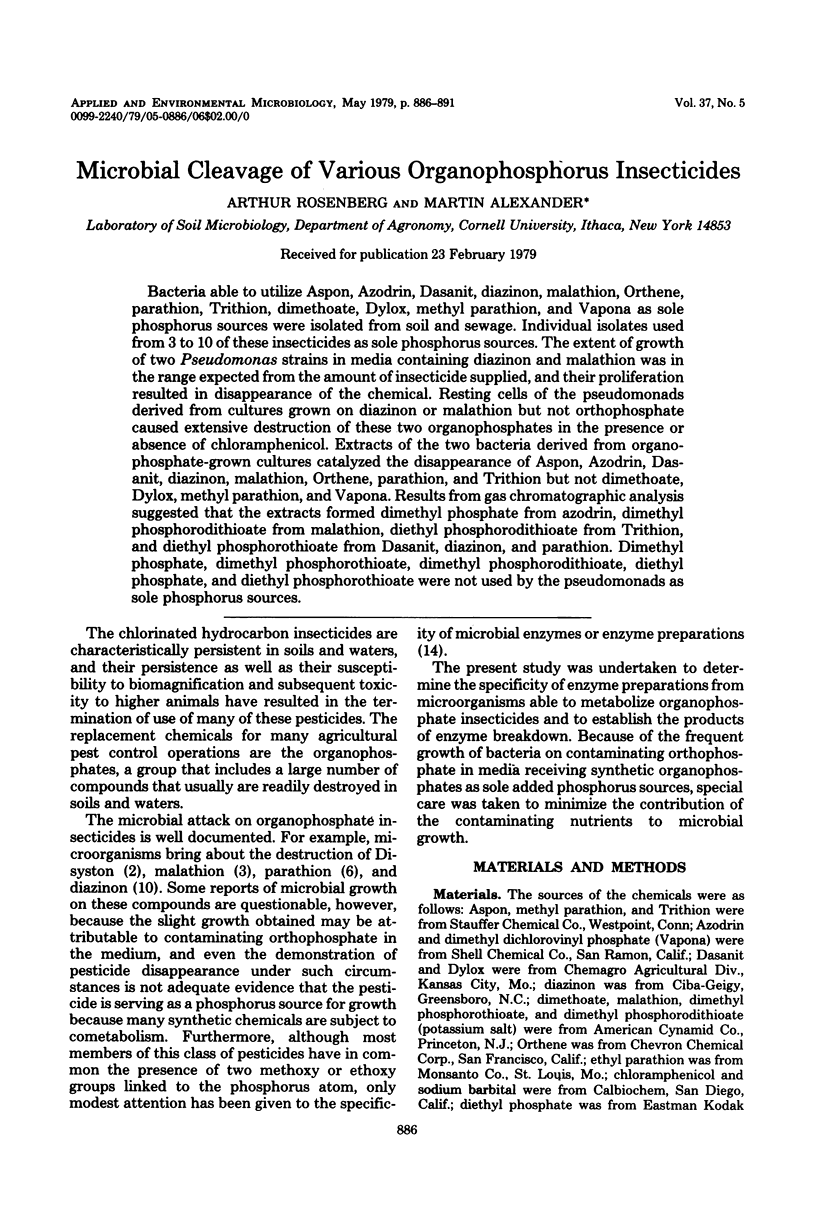
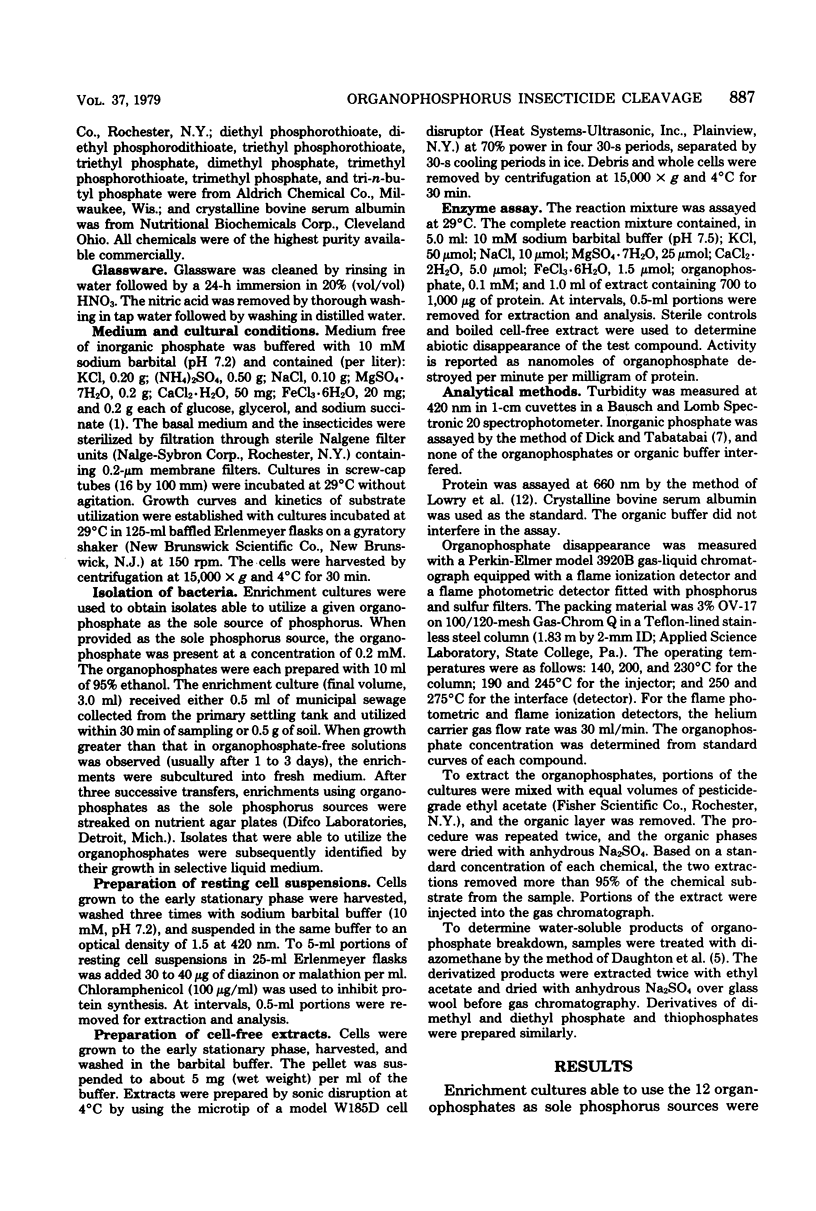
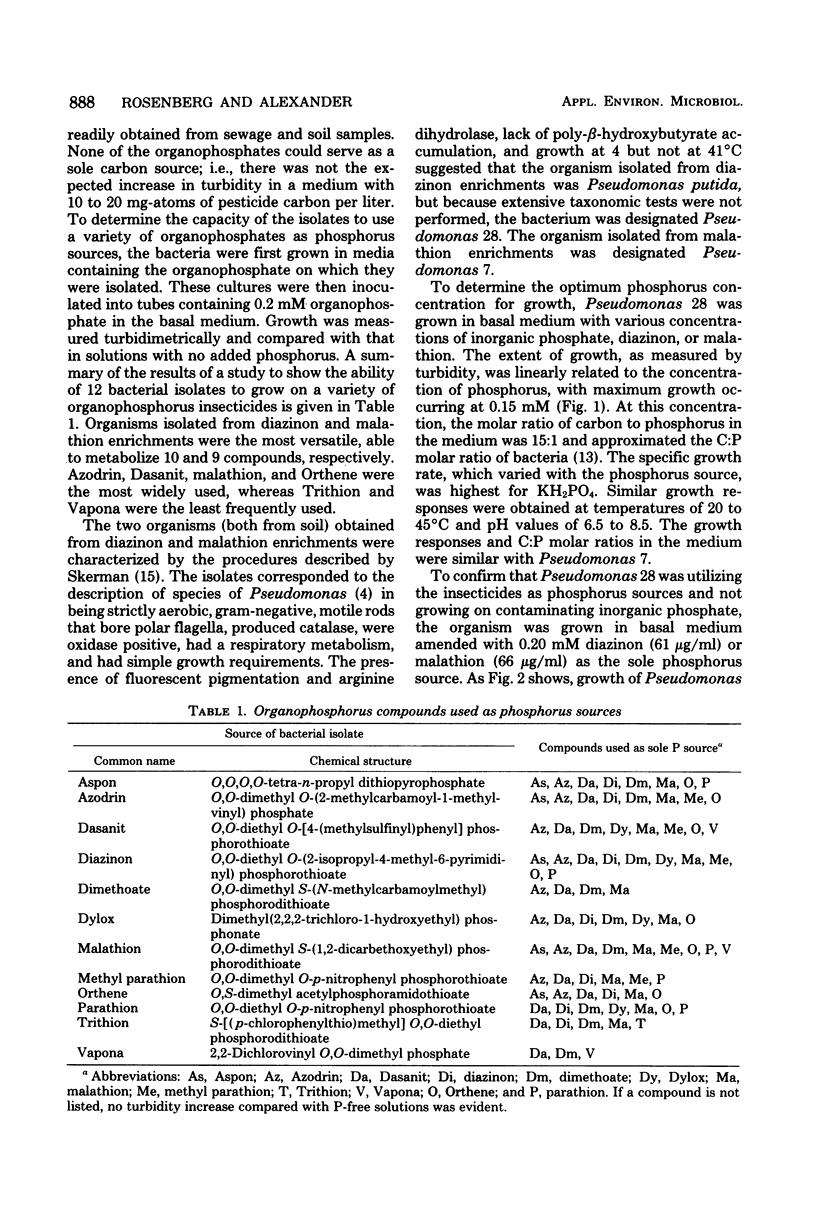
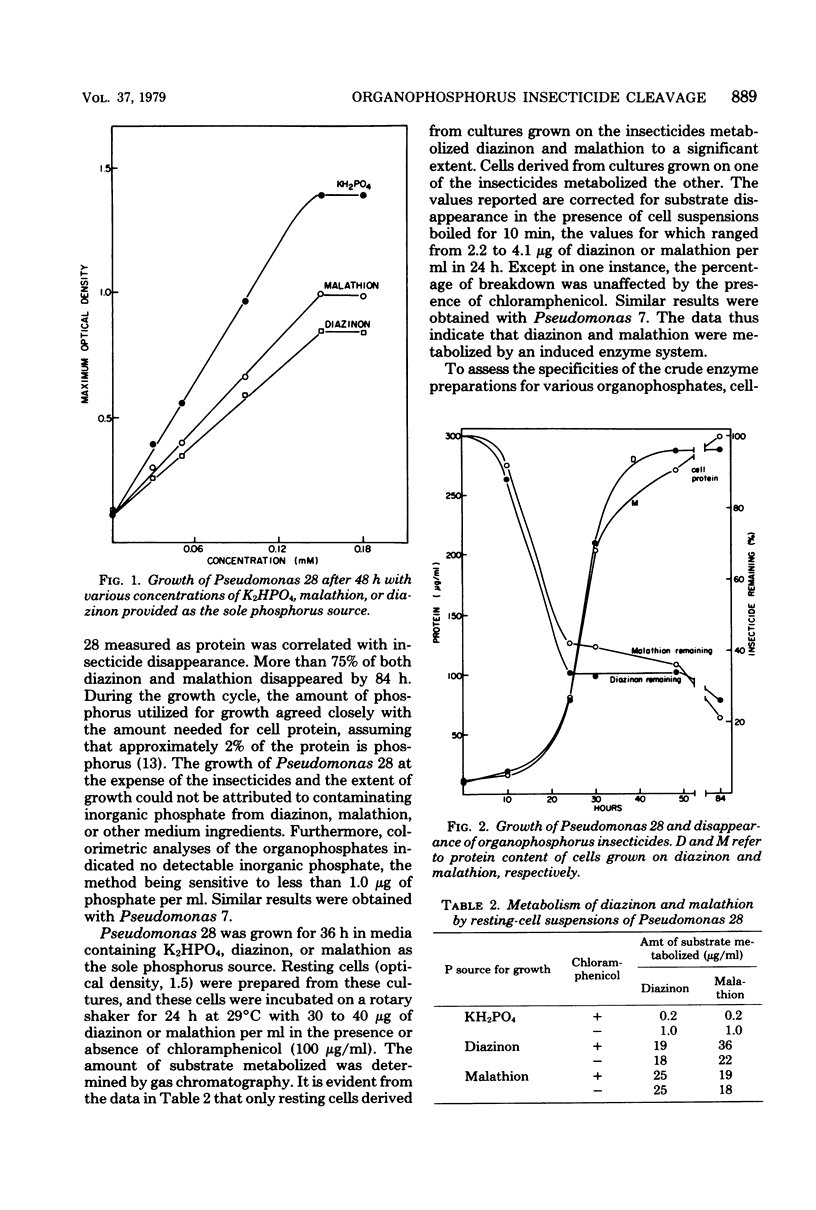
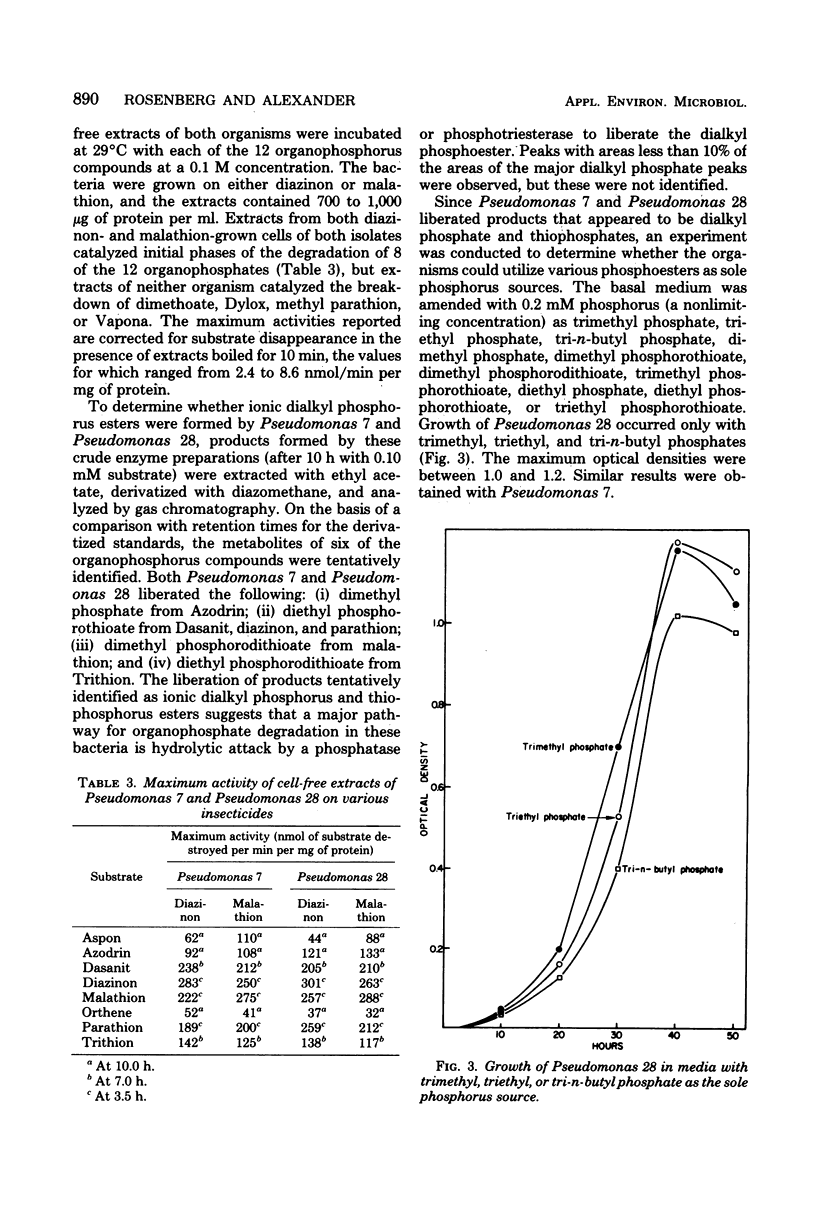
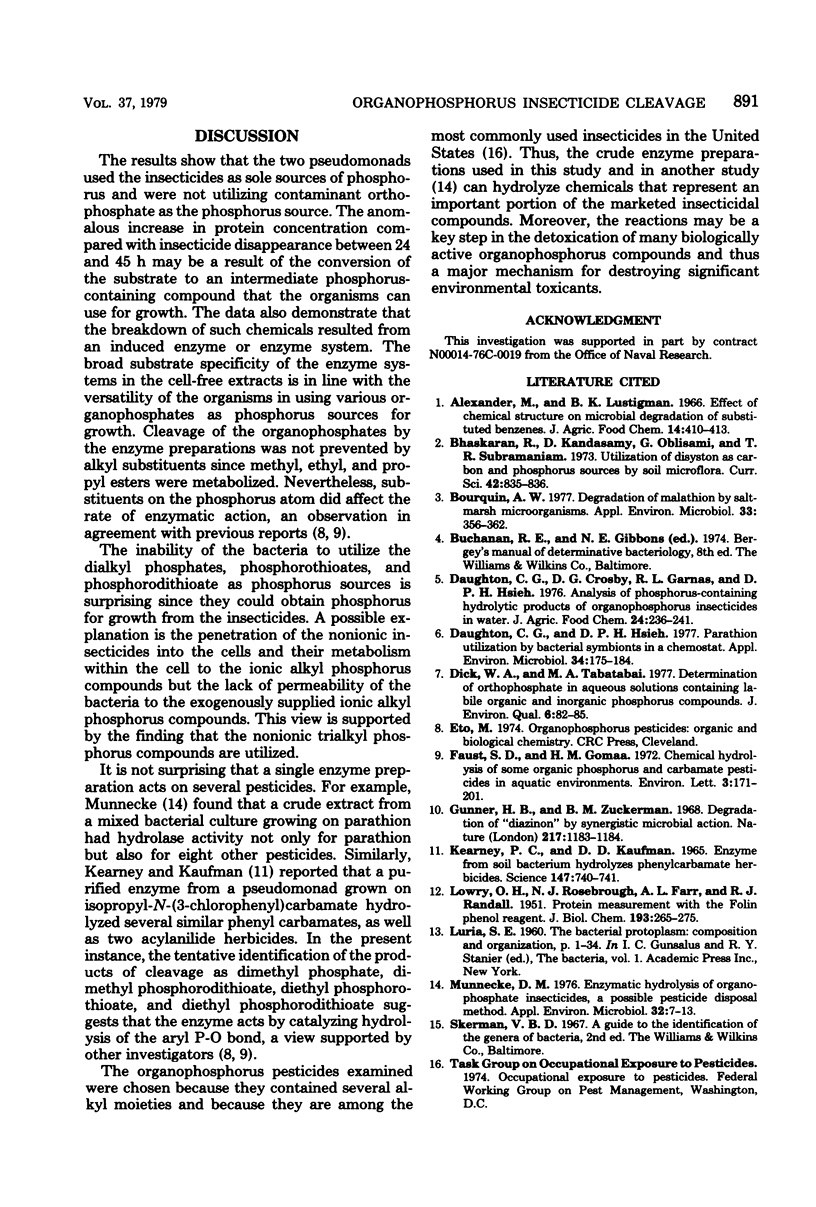
Selected References
These references are in PubMed. This may not be the complete list of references from this article.
- Bourquin A. W. Degradation of malathion by salt-marsh microorganisms. Appl Environ Microbiol. 1977 Feb;33(2):356–362. doi: 10.1128/aem.33.2.356-362.1977. [DOI] [PMC free article] [PubMed] [Google Scholar]
- Daughton C. G., Crosby D. G., Garnas R. L., Hsieh D. P. Analysis of phosphorus-containing hydrolytic products of organophosphorus insecticides in water. J Agric Food Chem. 1976 Mar-Apr;24(2):236–241. doi: 10.1021/jf60204a015. [DOI] [PubMed] [Google Scholar]
- Daughton C. G., Hsieh D. P. Parathion utilization by bacterial symbionts in a chemostat. Appl Environ Microbiol. 1977 Aug;34(2):175–184. doi: 10.1128/aem.34.2.175-184.1977. [DOI] [PMC free article] [PubMed] [Google Scholar]
- Faust S. D. Chemical hydrolysis of some organic phosphorus and carbamate pesticides in aquatic environments. Environ Lett. 1972;3(3):171–201. doi: 10.1080/00139307209435465. [DOI] [PubMed] [Google Scholar]
- Gunner H. B., Zuckerman B. M. Degradation of 'Diazinon' by synergistic microbial action. Nature. 1968 Mar 23;217(5134):1183–1184. doi: 10.1038/2171183a0. [DOI] [PubMed] [Google Scholar]
- Kearney P. C., Kaufman D. D. Enzyme from Soil Bacterium Hydrolyzes Phenylcarbamate Herbicides. Science. 1965 Feb 12;147(3659):740–741. doi: 10.1126/science.147.3659.740. [DOI] [PubMed] [Google Scholar]
- LOWRY O. H., ROSEBROUGH N. J., FARR A. L., RANDALL R. J. Protein measurement with the Folin phenol reagent. J Biol Chem. 1951 Nov;193(1):265–275. [PubMed] [Google Scholar]
- Munnecke D. M. Enzymatic hydrolysis of organophosphate insecticides, a possible pesticide disposal method. Appl Environ Microbiol. 1976 Jul;32(1):7–13. doi: 10.1128/aem.32.1.7-13.1976. [DOI] [PMC free article] [PubMed] [Google Scholar]


